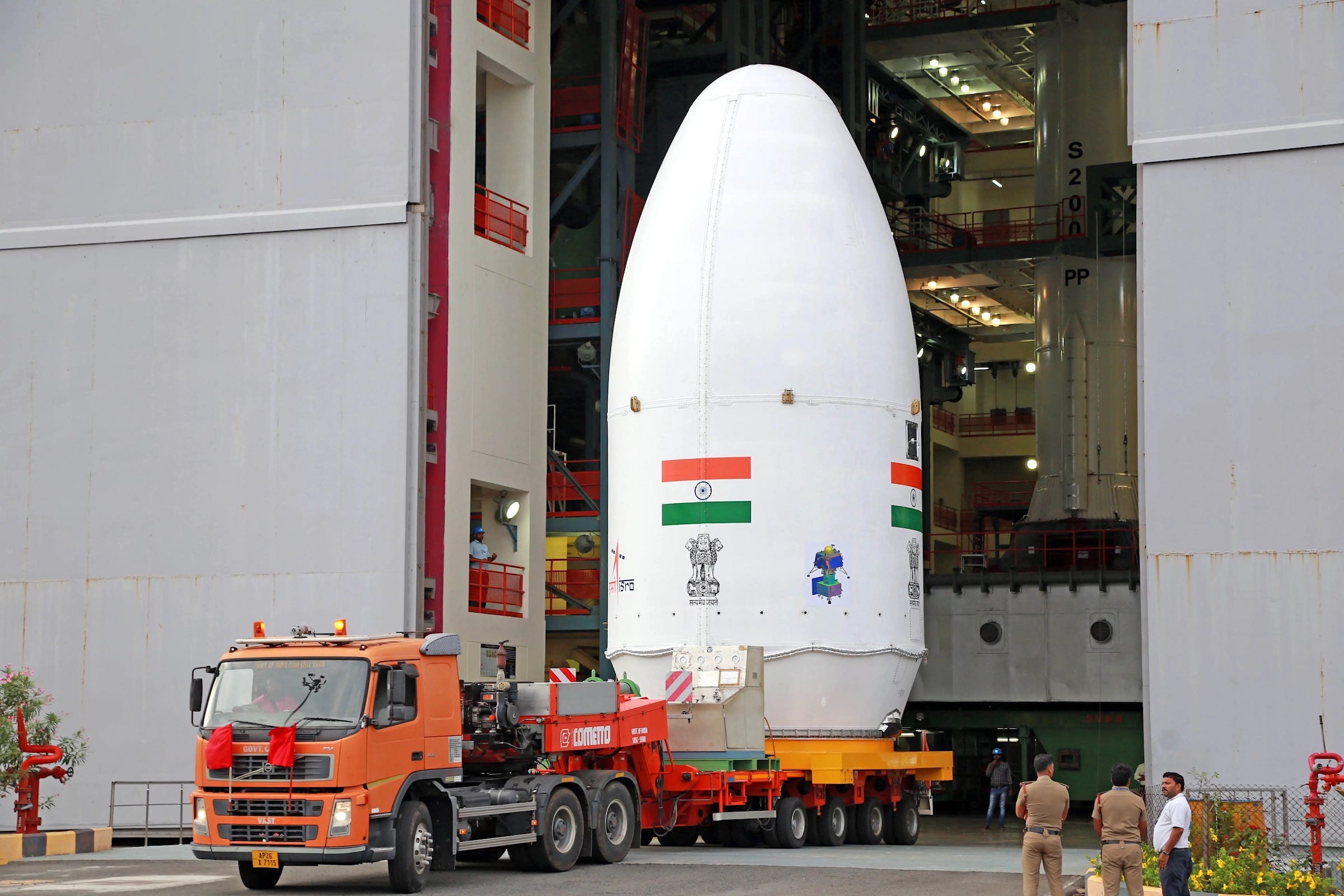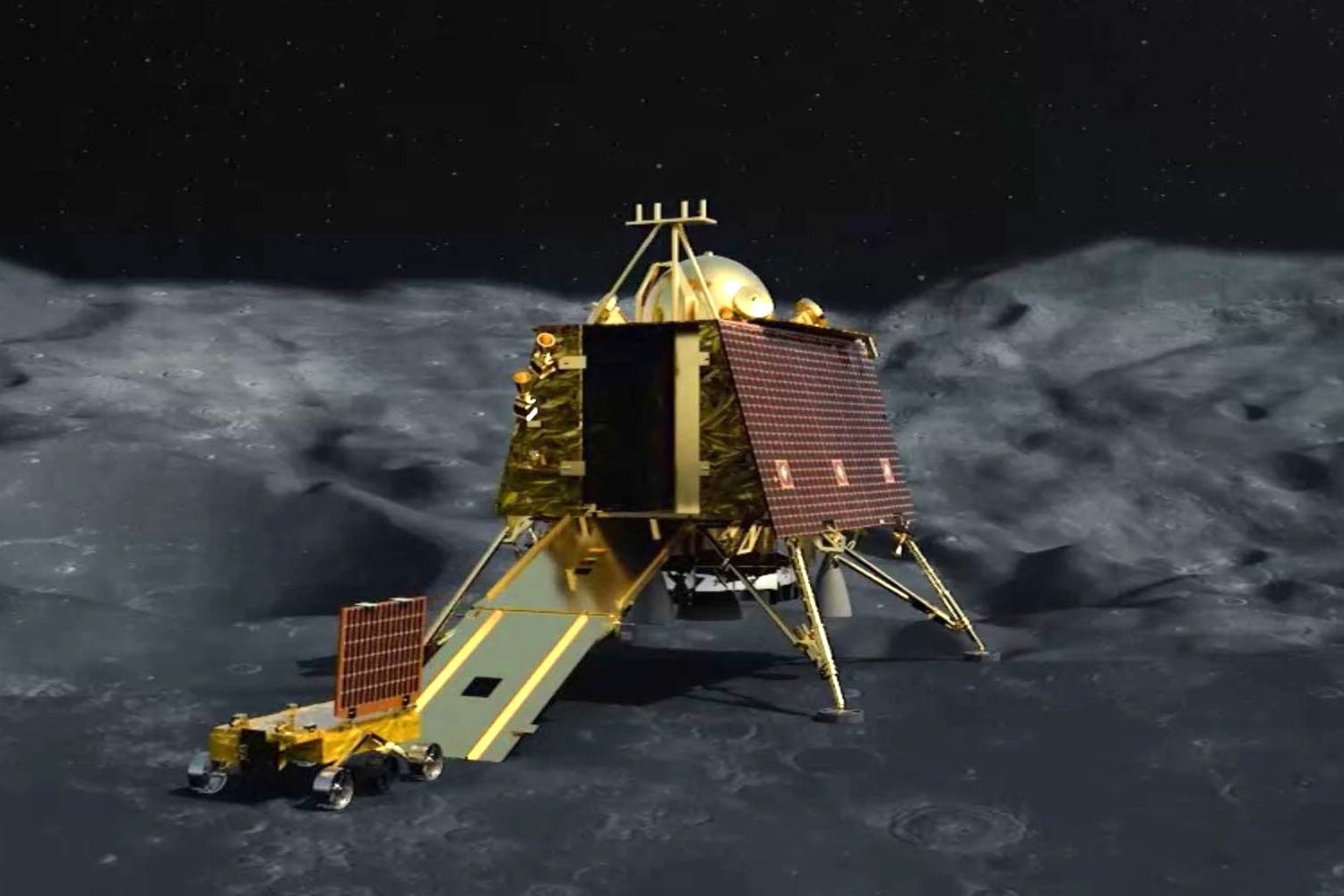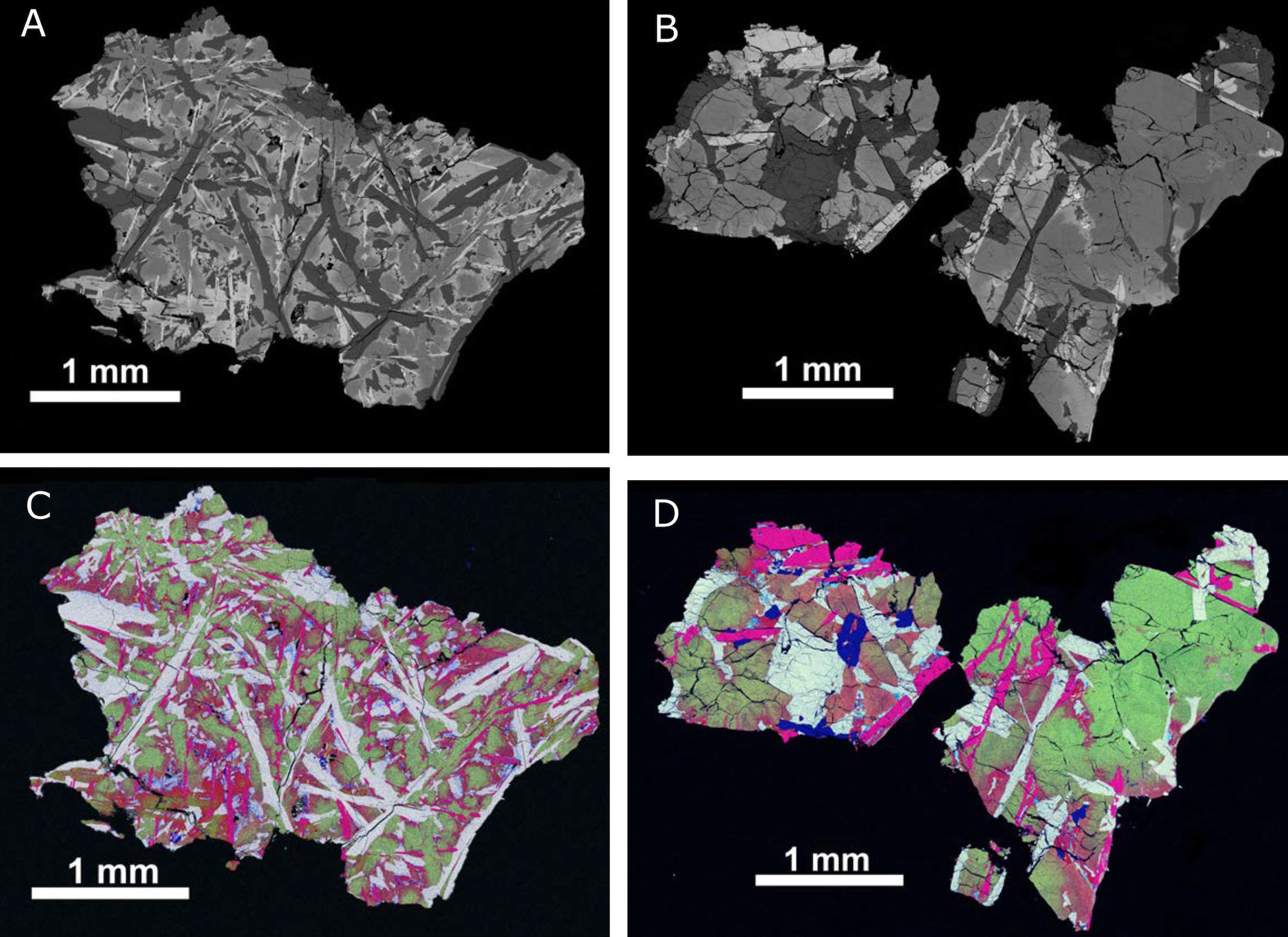Moon Monday #135: India set to launch Chandrayaan 3, an overview of Chang’e 5 science, and more
I’m pleased to welcome Arun Raghavan as the first individual sponsor of Moon Monday for a year! If you too would like to personally support this one-of-a-kind newsletter and space community resource, get in touch:
Chandrayaan 3 takes off on July 14

ISRO is set to launch its Chandrayaan 3 Moon lander on Friday, July 14 at 2:35 PM IST. Its lander will attempt a soft touchdown on Luna as India’s second such try, as the lander on the 2019 Chandrayaan 2 mission unfortunately crashed during its final descent phase. A graceful touchdown would make India only the fourth country to achieve a lunar landing, following the US, the USSR, and China. I’m thrilled that I’ll be at Sriharikota to watch Chandrayaan 3 blast off for the Moon in person! 🚀🌗
Except an article on the mission soon, along with its updates per usual. In the meanwhile, below are some interesting mission tidbits and trivia to munch on.
- The solar panels on both the Chandrayaan 3 lander and rover are mounted nearly 90° relative to the Moon’s surface. Since the landing site is at ~69°S, the Sun won’t rise higher than ~21° in the sky throughout the mission length of one lunar day. The sideways-facing solar panels thus maximize generated power.
- Since the Chandrayaan 2 orbiter is operating successfully with its host of Moon-studying science instruments, and one observing the Sun in fact, the orbiter module of Chandrayaan 3 is primarily tasked with getting the lander to and around the Moon post-launch. Having said that, the orbiter will host one Earth-observing experiment called SHAPE, which is a near-infrared spectro-polarimeter made to observe the full Earth disc from Luna to get a sense of what signatures of habitable Earth-like exoplanets might look like.
- For testing Chandrayaan landers and rovers, ISRO developed a lunar soil simulant called LSS-ISAC-1. To make the simulant, ISRO sourced naturally occurring lunar-like anorthosite rock fragments from the Sittampundi Anorthosite Complex in southern India. This aided the simulant’s fidelity. The bulk chemistry, mineralogy, and physical & mechanical properties of the final LSS-ISAC-1 simulant are similar to Apollo 16 highland soil samples. This partly due to Chandrayaan 2’s target landing site having been a lunar highland too, as is also the case with Chandrayaan 3.
- Originally slated for launch in the first half of 2023, Chandrayaan 3 was robbed of its ride to space as ISRO prioritized two GSLV Mk III rockets for commercial OneWeb launches instead.
- ISRO and NASA signed an agreement in February 2022 to use the latter’s Deep Space Network (DSN) to support communications for Chandrayaan 3. ESA will also provide backup mission communications via their Estrack network. ISRO uses its own Indian Deep Space Network as a primary means for communicating with its planetary spacecraft but partners with other space agencies like is the case here for backup and secondary options. India’s Chandrayaan 1 orbiter had DSN support too.

Reading menu: The road till Chandrayaan 3
Many thanks to Epsilon3, Arun Raghavan and Alexandra Witze for sponsoring this week’s Moon Monday.
Key scientific results from Chang’e 5
Note: Chandrayaan 3’s launch date was shockingly the only major lunar update of any kind last week, making it the weakest news cycle in the nearly three years of Moon Monday! Well, a neat paper on Chang’e 5 came out recently so this is a good opportunity to write about it.

Scientists from the Chinese Academy of Sciences have published an open access paper providing a great overview of the key scientific results from China’s Chang’e 5 mission, which brought lunar samples from near a volcanic dome to Earth. Here are some key takeaways:
- Chang’e 5 sample studies confirmed that the Moon was volcanically active 2 billion years ago, a fairly recent time on geological scales. However, the extremely low water content and an unexpectedly low abundance of heat-producing elements in those samples suggest that there seems to have been no significant catalyst in the Moon’s mantle to make Luna spew out lava for so long after peak volcanism ended well over a billion years ago at that point. While we don’t know the answer to this mystery yet, a spectrometer on the Chang’e 5 lander found evidence of surface water in the landing region, which indicates higher concentrations of volcanism-aiding elements. Clues also come from the review paper noting enhanced presence of clinopyroxene-ilmenite cumulate in the samples, which could’ve also catalyzed late lunar volcanism by lowering the lava’s melting point.
- Chinese scientists have used the precise ages of the Chang’e 5 samples to update the crater counting model, which is the basis for determining ages of most features on the Moon. It then turned out that some lunar features may be as much as 240 million years older than previously thought. The scientific value of the Chang’e 5 samples isn’t limited to the Moon. Scientists are using these more accurate ages of lunar places and regions to calibrate the ages of features on other worlds such as Mars and Mercury. Chang’e 5 samples are thus helping us refine our understanding of the chain of key events in our Solar System.
- The Chang’e 5 samples also contain notable amounts of meteoritic materials, helping scientists unravel the type of asteroids that impacted the Moon in the past 2 billion years, providing another key constraint in understanding the evolution of our Solar System.
China is launching Chang’e 6 next year to bring about two kilograms of lunar samples from the scientifically even more valuable Apollo impact crater on the Moon’s farside.
More Moon
- ULA is disassembling their new Vulcan rocket to send its Centaur V upper stage back to its factory for reinforcing its paper-thin liquid hydrogen steel tank, Stephen Clark reports. This comes as ULA Chief Tory Bruno said on June 13 that the March 29 blowing up of a test Centaur V was due to the tank’s skin being too thin. This means the long-awaited inaugural Vulcan launch carrying Astrobotic’s first Moon lander will now take place no earlier than Q4 of this year. The lander will carry NASA CLPS payloads as well as commercial, international ones.
- I was interviewed by The Indian Express on how India having signed the US-led Artemis Accords could benefit India’s space program as well as feed into NASA’s crewed Artemis missions.
